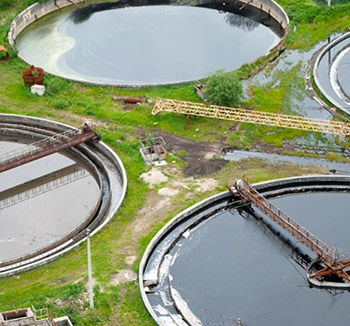The Dynamics Of Vulnerability:
Rethinking Our Approach To Drought In The Face Of Climate Change
by Dan Zietlow
Much of eastern Australia is currently in the midst of some of the driest months on record. Similarly, wintertime droughts are becoming increasingly common for the Mediterranean region. Closer to home, California posted its driest documented year in 2013. These regions of the world, as well as many others, successfully mitigated short-term effects of drought in the past by implementing “no regrets” strategies. Such policies are arguably good for the preservation of our environment regardless of climate change, with common solutions including mandatory water restrictions and more efficient methods of water conservation (e.g., low-flow toilets or xeriscaping). With increased knowledge of anthropogenic-induced climate change, we must also begin to ask: do “no regrets” solutions reduce water system vulnerability in conditions of long-term climate change? Lisa Dilling, a scientist with the Center for Science and Technology Policy Research at the University of Colorado, and her colleagues are beginning to ask such a question.
Dilling is the principal investigator for the Interactions of Drought and Climate Adaption for Urban Water (IDCA) project. Her work aims to understand the dynamic nature of vulnerability to identify drought management policies that are effective across the timescales on which climate change operates. Vulnerability (i.e., susceptibility to harms like drought) is a function of one’s exposure and sensitivity to that vulnerability, as well as society’s capacity to adapt. With this in mind, it is often asserted that actions taken to reduce vulnerability to current climate variability will help in adapting to climate change (the “no regrets” solutions discussed earlier). Evidence suggests, though, that ignoring the spatial and temporal dynamic of exposure to vulnerability may solve the problem in the short-term, but may shift vulnerability to other parts of the system or limit our future ability to adapt. In the case of drought, there are concerns that restructuring urban water systems to permanently conserve water might limit flexibility to cut back on water usage during future drought.
 A scan of drought policies implemented by various cities across the United States highlight this exact problem: we can make changes to adapt to drought today, but may not always anticipate the long-term effects of such policies, especially in the face of climate change. Despite initial limitations ranging from equity concerns to social resistance, most cities considered their drought policies successful since they reduced the overall amount of water used. That being said, many water policies caused unforeseen problems, including water quality issues and revenue imbalances. In-depth analysis is now underway on the water systems of Tampa, FL, Austin, TX, and Las Vegas, NV to further elucidate the linkages between drought response and other elements of the water system. A scan of drought policies implemented by various cities across the United States highlight this exact problem: we can make changes to adapt to drought today, but may not always anticipate the long-term effects of such policies, especially in the face of climate change. Despite initial limitations ranging from equity concerns to social resistance, most cities considered their drought policies successful since they reduced the overall amount of water used. That being said, many water policies caused unforeseen problems, including water quality issues and revenue imbalances. In-depth analysis is now underway on the water systems of Tampa, FL, Austin, TX, and Las Vegas, NV to further elucidate the linkages between drought response and other elements of the water system.
From her initial work, Dilling has drawn some significant preliminary conclusions. Namely, we might want to rethink the language used around adaptation from “no regrets” to “proceed with caution.” “No regrets” decisions made to ensure a sufficient supply may reduce physical exposure to drought, but have other effects on financial systems, political relationships, and perceptions of fairness. Attention to how the dynamics of vulnerability shift following significant adaptation decisions will allow for a more informed and flexible approach as we adapt to climate change.
Dan Zietlow
daniel.zietlow@colorado.edu |
